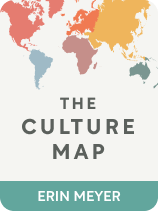

This article is an excerpt from the Shortform book guide to "The Culture Map" by Erin Meyer. Shortform has the world's best summaries and analyses of books you should be reading.
Like this article? Sign up for a free trial here .
What is individual decision-making? What are the main benefits of the individual decision-making style? What are its key disadvantages?
Individual decision-making is where the chief decision-maker may consider others’ opinions, but ultimately, the individual (usually the boss) makes the final decision. The individual decision-making style is the key feature of hierarchical cultures where there is a clear delineation of ranks amongst members.
In this article, we’ll explore the key advantages and disadvantages of individual decision-making, and present some strategies for working in cultures that decide individually.
How Deciding Individually Works
Cultures that make decisions individually tend to decide quickly and early in the process. But even after it’s made, the decision remains flexible and open to change based on new information or new opinions. So implementation tends to take a long time. (Shortform note: This may also be a feature of low-context cultures. Some suggest that low-context cultures are more likely to notice how objects differ, so they’re also more likely to believe that a ‘best choice’ exists. As such, they might be more open to changing their decisions.)
Since the decision can change so easily, critics believe that those who decide individually change their minds too often, or that they haven’t really made a decision at all when they claim they have. In contrast, one benefit of individual decision-making might be that it increases accountability, which one article suggests would improve your work because you’d be responsible for the consequences should your project fail.
Consensus deciders also don’t think individual deciders fully listen to or incorporate their feedback. This frustrates consensus deciders, who may not consider individual deciders to be team players.
| How the Social Orientation Hypothesis Affects Individual Decision-Making The “social orientation hypothesis” may explain why people don’t think of individual deciders as team players. Cultures that prize independence tend to follow their own goals, while cultures that prize interdependence make decisions that benefit everybody. It’s possible that collectivist cultures, in particular, have trouble with individual deciders The “social orientation hypothesis” may also explain why cultures develop different cognition patterns. It suggests that cultures that prize independence tend to think analytically, while cultures that prize interdependence tend to think dialectically. Researchers found that when Mexican farmers became more capitalist and thus more independent, they also thought more analytically. |
Strategies for Cultures That Decide Individually
Check your ego. If you’re not the leader, others will not consider your opinion as highly as you’re used to in the decision-making process. They might not ask for it at all. Remember that this is not a sign that your colleagues disrespect you, but merely a cultural difference. Be sure to follow all decisions, even if you disagree with them. As Meyer warns, not doing so will garner you a reputation as being difficult and insubordinate.
(Shortform note: However, In a separate article, Meyer states that if you’re in an individual and egalitarian culture, you need to present your opinion if you have one because it may not be asked for. This underscores the idea that you can’t use all of these strategies independently. In other words, don’t assume that because a culture decides individually, you can use any of the strategies in this section. In order to be an effective businessperson abroad, you need to understand how all of these spectrums interact, and choose the strategies that make the best sense in your particular business context.)
Move quickly. If you are the leader, get ready to make decisions without as much time or feedback as you’re used to. Others’ opinions are valuable, and you should listen to them. But wait too long to make a decision and your colleagues might view you as inefficient or weak. (Shortform note: In a separate article, Meyer warns that hierarchical cultures may interpret offhand comments as decisions and act on them. One potential way to avoid this is to explicitly delineate between suggestions and decisions.)
Remain flexible. Decisions can almost always be changed. Sometimes, they might be changed without your knowledge. In order to succeed, you must remain flexible and learn how to adapt quickly to new information. (Shortform note: How can you become more flexible? Try following Ray Dalio’s principle of “radical open-mindedness,” where you accept that you’re wrong and relentlessly find ways to increase the chances that you are right.)
Vote. If there is no clear leader, suggest a vote. Majority rules. (Shortform note: Countries that decide by consensus also sometimes follow the majority. But they tend to alter their decisions to appease the minority until there are as few dissenting opinions as possible. Countries that decide individually vote only once. If you lose, you lose.)

———End of Preview———
Like what you just read? Read the rest of the world's best book summary and analysis of Erin Meyer's "The Culture Map" at Shortform .
Here's what you'll find in our full The Culture Map summary :
- The eight axes you can use as a framework to analyze cultural differences
- How to better relate to those of another culture to accomplish business goals
- How the Vikings have more gender equality than we see today






